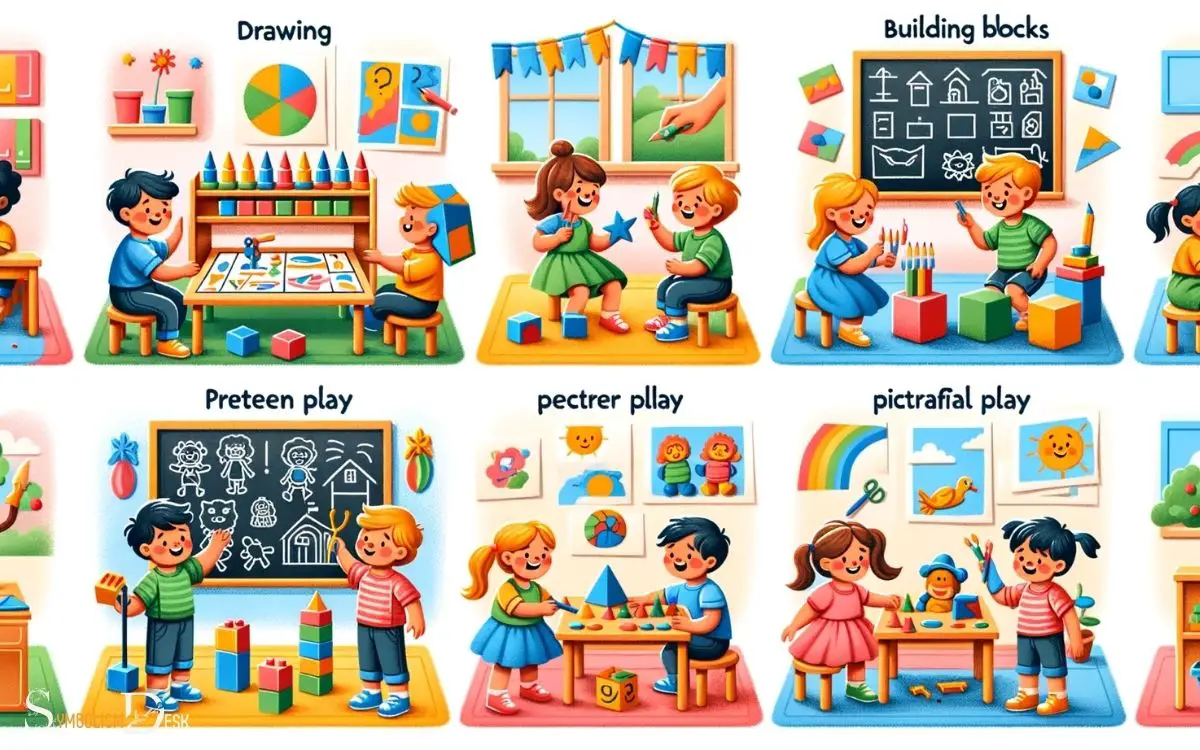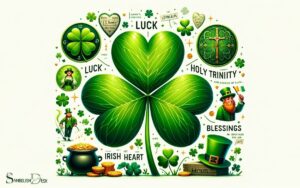Name Five Abilities in Which Preschoolers Express Symbolic Thinking
Five key abilities in which preschoolers exhibit symbolic thinking include pretend play, drawing and artistic expression, language use, understanding symbols and numbers, and object substitution.
Symbolic thinking is the ability to use symbols, objects, or actions to represent other objects, phenomena, or concepts.
In preschoolers, this cognitive skill is demonstrated through:
- Pretend Play: Children engage in role-playing and create scenarios that imitate real-life situations or fantasy worlds.
- Drawing and Artistic Expression: Through drawings and crafts, children represent their thoughts and ideas visually.
- Language Use: The development of language skills allows children to use words to symbolize objects and concepts.
- Understanding Symbols and Numbers: Preschoolers start recognizing symbols such as letters and numbers, understanding that they represent sounds and quantities.
- Object Substitution: Using one object to represent another in play, such as pretending a block is a car, showcases early abstract thinking.
Preschoolers’ symbolic thinking paves the way for complex cognitive development, highlighting their creativity and capacity for abstract reasoning.

Key Takeaway
Pretend Play
Pretend play is a key way in which preschoolers express their emerging symbolic thinking abilities. During pretend play, children engage in activities where they represent objects, actions, or roles with symbolic meaning.
Through this type of play, they can use an object to represent something else, such as using a block as a phone, demonstrating their understanding of symbols.
Additionally, in pretend play, children often take on roles and act out scenarios, showing their ability to use symbols to create and convey meaning.
This type of play also allows preschoolers to practice perspective-taking and understand different viewpoints, further showcasing their developing symbolic thinking skills.
Drawing and Art
Preschoolers express symbolic thinking through drawing and art, utilizing various forms of visual representation to communicate their ideas and emotions.
Through art, children can depict their surroundings, feelings, and experiences, allowing adults a window into their perspectives. Art enables preschoolers to convey abstract concepts, such as love, happiness, or fear, in a tangible form.
Their drawings often serve as a means of storytelling, with each stroke and color choice representing a part of their narrative.
Furthermore, art provides a platform for preschoolers to experiment with symbols and shapes, fostering their creativity and imagination. By encouraging and acknowledging their artistic expressions, adults can support the development of children’s symbolic thinking skills.
Moving from the visual arts to language development…
Language Development
In the context of language development, the use of symbols and representation continues to play a vital role in preschoolers’ expression of abstract concepts and experiences, facilitating their transition from visual art to verbal communication.
Preschoolers demonstrate their symbolic thinking abilities through language development in various ways:
- Vocabulary Expansion: They begin to use words to represent objects, actions, and feelings.
- Storytelling: They engage in imaginative play and create narratives using language.
- Symbolic Play: They engage in role-playing and using objects symbolically, demonstrating an understanding of representation.
- Understanding Metaphors: They start to comprehend and use simple metaphors and analogies in their language, showing an understanding of abstract concepts.
These language abilities reflect the progression of symbolic thinking in preschoolers, laying the foundation for more complex communication skills.
Object Substitution
Object substitution serves as a pivotal demonstration of preschoolers’ symbolic thinking abilities. They adeptly manipulate and replace objects to represent other items, showcasing their evolving cognitive development.
This ability reflects the child’s understanding that one object can stand for another, even if they are not similar in appearance. For instance, a block can represent a phone, or a stick can become a magic wand.
Object substitution highlights the child’s capacity to engage in pretend play and demonstrate their understanding of symbols. Through this process, preschoolers exhibit their creativity and imagination, displaying an advanced level of cognitive flexibility.
How Can Preschoolers Demonstrate Symbolic Play in Their Abilities?
Preschoolers can develop their creativity and problem-solving skills through symbolic play ideas. Activities like pretending to cook in a play kitchen or taking care of a baby doll allow them to role-play and use their imagination. Engaging in make-believe scenarios and using objects to represent something else demonstrates their understanding of symbolic play.
How Can Preschoolers Express Symbolic Thinking Through the Symbolic Meaning of a Dandelion?
Preschoolers can express the symbolic meaning of dandelion through playful exploration. Whether blowing the seeds to make a wish or using the yellow blooms for pretend play, children can use the dandelion’s symbolism to express their imaginative and symbolic thinking in creative and engaging ways.
Symbolic Representation
Demonstrating symbolic representation, preschoolers exhibit their understanding of abstract concepts through the use of imaginative play and representation. This ability allows them to express and interpret various ideas and objects symbolically.
Here are four key ways in which preschoolers express symbolic thinking:
- Pretend Play: Engaging in imaginative scenarios where objects or actions represent something else.
- Drawing and Artwork: Using drawings and artwork to symbolically represent their thoughts and feelings.
- Language Development: Utilizing words and language to symbolize objects, actions, and ideas.
- Symbolic Gestures: Employing gestures or movements to symbolically convey meaning or represent objects or actions.
Preschoolers’ ability to engage in symbolic representation plays a crucial role in their cognitive and socio-emotional development, fostering creativity and abstract thinking.
Conclusion
Preschoolers exhibit symbolic thinking through several key abilities, including pretend play, drawing and art, language development, object substitution, and symbolic representation.
These skills enable them to use imagination, express ideas through symbols, understand the concept of substitution, and creatively explore their surroundings.
Preschoolers’ symbolic thinking abilities are like various colors on a palette, contributing to the rich tapestry of their developing minds.






